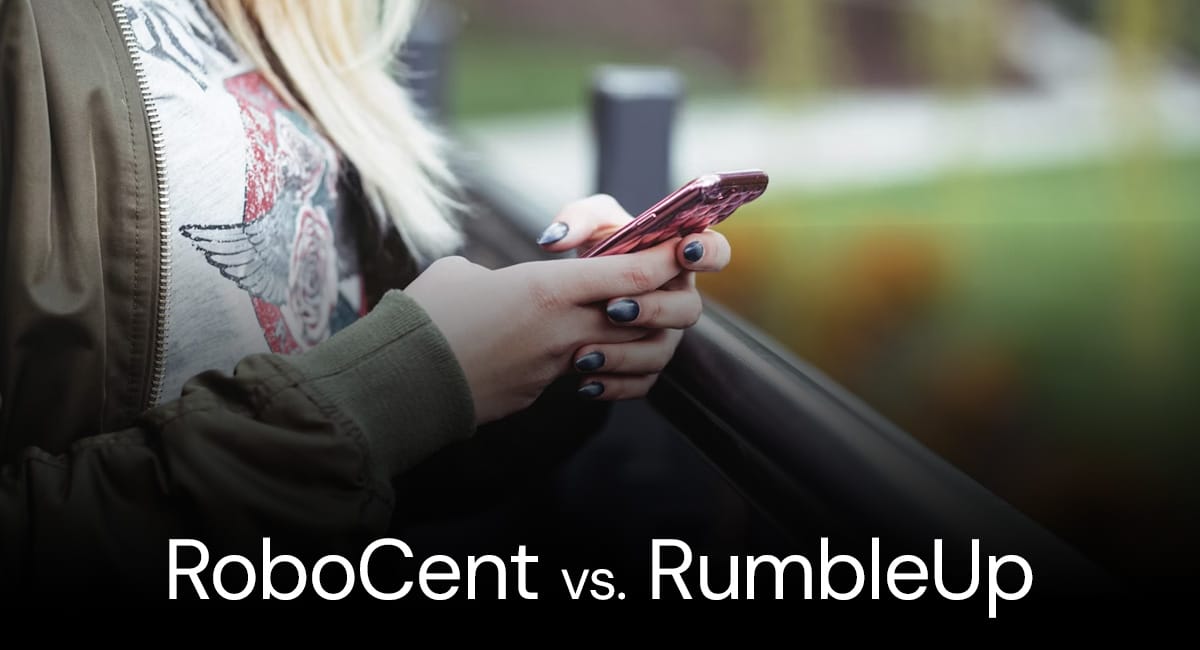
Campaigns live or die by communication. Peer-to-peer texting is proven to mobilize action, empower communities, and win campaigns.
Text messages enjoy an open rate of around 90%, compared to the pitiful 20% open rate emails receive. The average message is read within 3 minutes of being received, while the average email has to wait 90 minutes to be read. Texts generate a response rate of 45%, while emails struggle with a 5% response rate.
That’s all great, but how can you and your campaign utilize P2P texting?
There are dozens of P2P texting services and platforms vying for your patronage. But which platform is the best for you? Which ones will propel your campaign towards your success? Which ones will bog you down with useless features and confusing interfaces?
We’ve compiled 10 of the most popular Peer-to-Peer texting platforms to help you decide.
In this article, we will delve into their unique offerings, advantages, and disadvantages. We will also share as much as we can about their pricing. First, we need to establish some key considerations.
Key Considerations for Your P2P Texting Service:
Depending on your responsibilities within the organization, you will prioritize some considerations over others.
For example, the digital director of a political campaign is operating at a high, top-down level. Their primary considerations will probably be pricing and scalability.
However, the volunteer coordinator is responsible for recruiting, training, and managing volunteers. These volunteers often use the P2P platform to conduct the actual outreach. Volunteer coordinators need an intuitive platform that is easy to use, easy to manage, and easy to train on. When the campaign eventually hits a snag, they will be the ones communicating with customer support, so customer support better be helpful.
Overall, the goal should be to balance all stakeholders’ needs as best you can. Campaigns rely on your team’s collaboration and cooperation.
Key considerations:
1) Pricing: Is the platform worth it?
Pricing is often the deciding factor for many purchases. Instead of asking whether or not the platform works with your budget, ask if the platform’s value justifies its price. Remember, text message marketing can be used to solicit donations (with a higher success rate than email marketing).
Another factor to consider is the pricing structure. Different platforms ask you to pay in different ways. Some operate on a subscription model, which means you’ll lose money if you don’t use it. However, subscriptions are easier to budget for. Most operate on a pay-as-you-go model. You pay for each outbound message. That might sound more affordable since you only pay for what you use. But pay-as-you-go adds up and can spiral out of budget.
2) Ease of use: Are the interfaces intuitive?
Can your volunteers quickly learn how to use it? Can your director manage all those users, content, and responses in a time-efficient manner? Many platforms will promise countless bells and whistles, but all those features are useless if they complicate the interface.
3) Support: Does the platform offer reliable customer support?
Support often goes overlooked because team members think they will not need it. Every tool has a learning curve and hiccups are bound to hit your campaign. Accept that problems will eventually happen. Good customer support will be empathetic, responsive, and help you recover. Poor customer support takes the form of chatbots and automated helplines that leave you running around in circles.
4) Analytics: How can you judge the success of your text message marketing without analyzing the results?
Your P2P texting platform should provide analytics on open rates, response rates, engagement, and cost-effectiveness. Data is a vital, strategic resource, and it will only become more valuable. It’s important to note that it is not about the amount of data but the quality of data. High-quality data is relevant, actionable, accurate, and timely.
5) Personalization: How easy is it to personalize your message?
After all, the advantage of text messages is their ability to break through the digital noise. You want to send messages that are relevant to your recipient, not generic, cookie-cutter promotions. How easy is it to segment your contact list into relevant demographics? Analytics and personalization often go hand-in-hand because timely analytics allows you to refine your personalization.
6) Scalability: Does the platform support the number of people you are trying to reach?
Does the platform support your growth? Local and state elections often have set contact lists. However, unions and advocacy groups are actively trying to grow. The wrong platform might stunt your group’s growth.
7) Integrations: Can the platform integrate with the campaign tools you are already using?
Most platforms can easily import and export CRM data. However, some have easy integrations with adjacent platforms like email marketing and calendars.
8) Compliance: Does the platform comply with all relevant laws and regulations?
Compliance is where things get complicated. Text message marketing and campaigns must adhere to guidelines set by governing bodies. The Federal Communications Commission (FCC) and the Cellular Telecommunications Industry Association (CTIA) are also involved. The guidelines are basic; for example, all recipients must opt-in and be able to opt out at any time. Good platforms make those processes super easy and set up guard rails to prevent violations. Some platforms pass the responsibility onto you. Ideally, you should not have to worry about compliance and just focus on your campaign.
9) Automation: Does the platform’s automation help your campaign, or are they just jumping on the AI bandwagon?
In some instances, automation can help you save time, be productive, and increase engagement. However, with the rise of generative artificial intelligence, “AI” has become a buzzword that platforms boast about without much thought. So, are the automation tools helpful, or are they just using AI to justify a price point?
With Those Strategic Considerations in Mind, Here are Our Rankings:
1) RoboCent
RoboCent balances those considerations while excelling in select aspects.
RoboCent understands the unique pressures of political campaigns. One such pressure is time. Political campaigns are extremely time sensitive. RoboCent optimizes all its services for quick turnarounds.
RoboCent understands the need for holistic support.
Its website offers free resources such as strategy playbooks, actionable blogs, and customer success stories. Customer support is quick to respond. You can expect all but your most basic inquiries to be answered by an actual human being. Also, when we asked a question the customer support representative did not know the answer to, they connected us with someone who did. That speaks volumes compared to the deadends and unhelpful chatbots other platforms provide.
RoboCent also provides expert guidance with campaign success consultants. These consultants take a hands-on approach to maximize your impact.
Accurate, precise, and reliable data is vital for a successful campaign. And data is only becoming more important.
RoboCent excels at data. The platform provides real-time analytics, empowering you to utilize data at every step of the campaign. You can monitor your campaign’s performance as it develops, enabling you to make intelligent, strategic decisions at the right time. RoboCent’s robust analytics provide deeper insights compared to its competitors.
RoboCent also provides voter data at an industry-low of 3¢ per record. Accessing comprehensive voter data at the beginning lays a strong foundation for your outreach. RoboCent does not flood you with inaccurate, out-of-date information. It provides reliable, accurate data through an advanced layer of validation. Furthermore, you can refine your outreach for greater precision. You can refine your target audience with various criteria, such as location, demographics, party affiliation, and voting history.
RoboCent provides flexible pricing packages at all levels.
You will not see that anywhere else on this list. RoboCent operates on a per-attempt (pay-as-you-go) basis. However, it provides transparent pricing because it understands pay-as-you-go is difficult to budget for. It also provides detailed cost summaries so you know what exactly you are paying for. Finally, its website offers a cost calculator so you can quickly receive an accurate quote. Click here to check out RoboCent.
2) RumbleUp
RumbleUp stands out in the peer-to-peer texting industry for its award-winning multilingual texting.
The multilingual texting service is great for midsize to large-scale campaigns. Its unlimited users, unlimited contacts, and local area codes further support campaigns of various sizes.
RumbleUp also offers live onboarding sessions to help your campaign start.
While RumbleUp’s data services are not as robust as RoboCent’s, they are very insightful. RumbleUp offers detailed reports on campaign performance. RumbleUp also educates clients on new factors affecting the texting ecosystem. The P2P texting landscape changes regularly and these updates help you stay relevant. It also offers data acquisitions, similar to RoboCent, to help you gather complete datasets.
One unique offering of RumbleUp is the provider audit.
RumbleUp will analyze your current provider’s pricing, delivery rates, response rates, ROI, and other resources to compare to itself. Of course, RumbleUp is biased towards itself.
However, RumbleUp’s pricing is opaque.
The website states, “personalized plans as low as 2¢ per segment.” However, that is all RumbleUp says about its pricing. Segments can be SMS or MMS. They do offer a 1-month free trial with 250 free texting segments.
3) GetThru
GetThru lacks unique features but makes up for it with reliability and security.
GetThru focuses on refining its platform for an intuitive and reliable service. The GetThru team takes security very seriously. That security protects you and your contact lists’ data. However, that also means the team regularly tests the code for vulnerabilities and bugs. You and your volunteers can work without interruptions or problems.
GetThru’s focus on clean, reliable code lends itself well to scalability.
GetThru can scale with growing nonprofits, unions, and advocacy organizations. To help those groups grow, GetThru offers quick customer support, including live assistance and strategic guidance.
GetThru’s scalability and reliability make it a great choice for campaigns relying on volunteers.
GetThreu’s focus on reliability led the design team to develop an intuitive, easy-to-use platform. Volunteers can quickly get up to speed with minimum errors.
GetThru offers trackable analytics; however, it is not as advanced as other P2P texting services.
GetThru’s pay-as-you-go model requires a one-time set-up charge of $100.
The pay-as-you-go model offers base pricing at 3.5¢ per outgoing SMS segment and 6¢ per outgoing MMS. However, GetThru offers contracted discounts for those with budgets greater than $10,000.
4) SimpleTexting
SimpleTexting excels at business-oriented communication and non-profit organizing. However, its political applications are limited.
With over a decade of experience, SimpleTexting is tailor-made for text message marketing. According to its own statistics, 60% of consumers want the ability to text businesses, as it’s easier than calling. SimpleTexting addresses that need.
SimpleTexing seamlessly slots into businesses.
It integrates with various business tools. It offers an intuitive design and 7 days a week customer support. The mobile app is great for business agents on the go.
The obvious application is highly targeted text message marketing. Its automation streamlines many tedious business tasks, such as follow-ups and appointment reminders. Text messaging is also great for internal communications. HR teams can communicate with individual team members or send out mass communications.
All those features do translate to political campaigns, but they seem to align better with unions and non-profits.
Its primary application seems to be organizing volunteers and team members. Again, it excels in business communication and non-profit organizing, but it is limited in other political applications.
Simple texting uses a subscription pricing model that includes a monthly allowance of messaging credits.
Thankfully, those messaging credits roll over. The lowest is $29 a month with 500 messages. You can purchase additional messages, with the pricing reflecting your subscription tier. The highest is $899 a month for 50,000 messages.
5) Peerly
Peerly is tailored to large-scale campaigns, prioritizing quantity over quality.
Peerly supports multiple languages and localized caller IDs, making it a good choice for large-scale national campaigns. It supports English, Spanish, and French. One of its newest features is AMP AI, which offers some promising productivity tools like sentiment analysis and opinion tracking. However, opinion tracking is a relatively new AI capability, and its accuracy fluctuates wildly depending on external factors.
Even without AMP AI, Peerly offers canned responses. AMP AI will only further this automation with template recommendations and auto answers. That may be efficient if you are messaging tens of thousands of people. However, it lacks the authenticity and human touch that makes P2P texting campaigns so effective. Remember, P2P texting campaigns mobilize action by forging those authentic connections.
If you do want that human touch, you can outsource some outreach to Peerly’s highly trained US-based P2P canvassers. It is akin to hiring a phone bank. Again, this is advantageous to large campaigns that may need extra support as they expand.
Peerly’s unique feature is gimmicky and impractical.
Case in point one of Peerly’ unique features is custom fonts for text messages. It is true you will not find custom fonts anywhere else on this list. However, custom fonts do not offer any real benefit. Yes, they will make messages “pop,” but they will not facilitate a response on their own. It may come off as gimmicky to recipients.
Many of the features Peerly touts on its homepage, such as HD videos (MMS), high-results pictures, and landline scrubbing, are basic industry standards. Peerly also offers little information on its customer support.
Finally pricing, Peerly’ pay-as-you-go model starts at 1.95¢ per text. It is simple and straightforward but lacks flexibility and may deter smaller campaigns.
6) Scale-to-Win
Scale-to-Win’s blast mode empowers campaigns to send thousands of messages instantly.
Blast mode certainly saves time. You can even schedule send for a later time. A/B testing can help refine your messaging. However, the primary advantage of P2P texting is one-on-one conversations that motivates action and mobilizes volunteers. Blast mode can certainly help with GOTV messaging and starting your campaign. However, overreliance on blast mode might lose some effectiveness.
The team behind Scale-to-Win are former campaign organizers.
They have developed certain add-ons for the specific needs of large-scale campaigns. The team even offers hands-on, collaborative partnerships. If you know what you want and are willing to work with a partner, the Scale-to-Win team can develop a custom solution.
Scale-to-Win operates on a pay-as-you-go model.
Scale-to-Win’s pricing is very straightforward. 2¢ per outbound SMS segment and 5¢ per outbound MMS message.
Scale-to-Win’s We Text program is a collaboration where the Scale-to-Win team works with your team to design and execute your campaigns. That is great for busy organizations, small teams, or thinly-spread groups. That is 6¢ per outbound SMS segment and 9¢ per outbound MMS message.
7) Text P2P
Text P2P’s unique features offer great benefits. However, its pricing is comparatively high and confusing.
Text P2P’s unique offers are ringless voicemail and well-rounded AI integration. Ringless voicemail allows you to send voicemails without ringing the recipient’s phone. It is essentially robocalling; however, the recipient does not have a chance to hang up. Ringless voicemail is unique among P2P services, but people do not like robocalls. Ringless voicemail skips the annoying call but can still leave that automated, artificial, spammy impression. You can overcome this by recording a message that sounds authentic and human.
Text P2P does a really good job of integrating AI in a very practical way.
You can use Text P2P’s AI to generate messages. However, if you do not want to write messages yourself, you can use any number of generative AIs already on the web. You can use AI Grammar to proofread your messages. A lot of people, especially those working with small teams, get anxious about sending professional messages. So, AI Grammar can help you feel confident in your messages. Finally, you can automate replies with AI replies. You can upload a Q&A database so common questions are quickly answered, saving you time.
Text P2P is geared towards small, local businesses. However, its features translate for small and mid-size political campaigns.
Text P2P operates on a credit-based subscription tier model.
Every message costs a certain amount of credits. An SMS (160 characters) and ringless voicemail is 1 credit, while an MMS (multimedia message) is 2 credits. Every subscription tier provides a set number of credits each month. Those credits do not roll over. The middle tier offers 1,000 credits for $42 a month.
If you want to send everyone a sequence consisting of a SMS, ringless voicemail, and MMS, then that is 4 credits for each recipient. You can only effectively communicate with 250 people.
This credit-based subscription model is probably to encourage you to buy additional credits. Luckily, those additional credits roll over.
8) CallHub
CallHub’s biggest advantage is its ease of use. However, its biggest disadvantage is its lackluster support.
CallHub’s platform offers unlimited agents and campaigns. That is good for larger organizations that have to manage a lot of volunteers and diverse campaigns. It also has call recording and call monitoring features which can be very helpful for training purposes.
One campaign organizer noted that most of their volunteers are retirees. So, they are anxious and unfamiliar with technology. However, the intuitive interfaces made it easy to learn and empowered those volunteers.
CallHub offers two pricing models: standard, which is “free,” and enterprise, which requires a custom quote.
“Free” is misleading because it is a pay-as-you-go model. Text messaging is 3.4¢ for outgoing SMS and 2.6¢ for incoming. Most of the other platforms do not charge for incoming messages, which is why incoming messages have not been mentioned until now. MMS is 9.5¢ for outgoing and 5¢ incoming.
There is a customer support discrepancy among the two pricing tiers.
The enterprise tier receives prompt support via phone and/or Slack. The standard tier only receives chat support with a promised response time of 12 hours.
9) Bird
Bird excels at business-to-consumer marketing but is not ideal for political campaigns.
Bird is geared towards businesses, specifically B2C businesses, and it is very good at it. While most P2P texting platforms are limited to text messages, Bird can use WhatsApp and Facebook Messenger. It also integrates with e-commerce platforms and payments systems.
Bird has an advanced customer profile CRM that focuses on gaining personalizable variables. Bird can compile customer details, preferences, and even behaviors based on past interactions. It uses these variables to enhance its chatbots. You can automate conversations to upsell or cross-sell consumers when the AI detects an opportunity.
Another advantage Bird has is the visual builder. Users can build dynamic messages with templates, GIFs, buttons, carousels, videos, and more. All these features gear Bird towards selling consumer products.
If this article asked, “which P2P texting service is right for your B2C brand,” then Bird would probably be on the top of the list.
Bird has limited application for political campaigns. Its customer profiling features could translate for crowdfunding. Bird has its niche in SMS marketing and excels at it.
Bird’s subscription model is based on your number of contacts.
The lowest tier is 3,000 contacts for $45 per month. This tier limits you to 30,000 messages a month. Your monthly message limit is 10 times the contacts you have. The highest tier is 50,000 contacts for $440 a month. Anything higher is enterprise pricing, which generates a custom quote.
10) Hustle
Hustle is unique among P2P Texting platforms as it specializes in conversational video.
Hustle’s big draw is that you can upload videos you already have, and it will optimize them for texting. You can then send out embedded video clips around 30 seconds in length. No external links are required.
Images, GIFs, and videos certainly add personality to the conversation. Videos are easy to consume and share. Public figures benefit from being seen. Hustle states that these short-form videos can drive your audience to long-form video. Long-form videos are great at educating people about a cause. However, the key language above is, “upload videos you already have.”
Hustle’s big drawback is that it requires a well-established content library.
Some politicians and advocacy groups already use short-form content to promote themselves on social media. Hustle can excel as a complementary tool to drive new viewers to your social media.
If you do not have a large content library, then you would struggle to make the most of Hustle. Making video regularly requires a collaborative team and a well established workflow. Hustle cannot really help you with that.
Hustle says you can quickly send personalized videos at scale. All you have to do is record and send a 15-second clip for each recipient. That might make sense for local campaigns, content creators, and influencers. But it is not practical for most groups.
Hustle is definitely a novel approach, and there is a market for content creators, influencers, and video-making brands. However, Hustle is not the right platform for most political campaigns.
Hustle’s pricing varies per usage and is primarily based on the number of contacts you upload. The prices range between 10¢ and 15¢ per text. There’s no data available for subscription plans or volume discounts.
Each P2P texting platform comes with its own advantages, disadvantages, and use cases.
However, for most political campaigns, RoboCent will give you the most bang for your buck.
RoboCent is well-rounded in all key considerations, yet its data excellence elevates it above the rest. By delivering accurate, reliable, and real-time analytics, it’s more than an outreach tool; it’s a strategic decision-making device. While the other platforms help you reach your audience, RoboCent helps you understand so you can refine your campaign.
How can you improve your outreach, if your outreach doesn’t help you improve?
RoboCent’s underlying attitude is “you-focused.” RumbleUp is less than forthcoming with its pricing, reflecting a lack of honesty. GetThru is focused inward on its code. Peerly’s attitude is quantity over quality. Scale-to-Win prioritizes partnerships over its platform. Text P2P’s pricing system is designed to make you spend the most.
If you’re ready to launch your campaign, we suggest starting with RoboCent’s Quick Start Guide. It delves into a step-by-step process so you can confidently initiate your campaign. If you get stuck down the road, RoboCent’s Ultimate Strategy Guide keeps you moving. The human representatives at customer support are very forthcoming and knowledgeable. If you have any questions, don’t hesitate to ask. Or reach out to sales to discuss a pricing package built for you.








